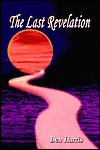"DNA shows Celtic hero Somerled's Viking roots
IAN JOHNSTON
SCIENCE CORRESPONDENT
A HISTORIC Celtic hero credited with driving the Vikings out of western Scotland was actually descended from a Norseman, according to research by a leading DNA expert.
According to traditional genealogies, Somerled, who is said to have died in 1164 after ousting the Vikings from Argyll, Kintyre and the Western Isles, was descended from an ancient royal line going back to when the Scots were living in Ireland.
But Bryan Sykes, an Oxford University professor of human genetics who set up a company called Oxford Ancestors to research people’s DNA past, has discovered that Somerled’s Y-chromosome - which is inherited through the male line - is of Norse origin.
Prof Sykes’ studies of three Scottish clans have also led to the conclusion that some 500,000 people alive today are descended from Somerled - a number only bettered by Genghis Khan, who, among historical figures studied to date, has an estimated 16 million living descendants.
The MacDonald, MacDougall and MacAllister clans all claim descent from Somerled and Prof Sykes found that between 25 and 45 per cent of them shared the same Y-chromosome, of a kind normally found in Norway but rare in Scotland and Ireland.
By analysing the rate of mutation in DNA samples from clan members, Prof Sykes was able to show that the Y-chromosome came from a common ancestor who lived roughly 1,000 years ago.
He then tested five chiefs from the clans and discovered they all shared the same chromosome, which convinced him that the common ancestor must be Somerled, Lord of the Isles, in keeping with clan histories.
However, the analysis threw into doubt Somerled’s own origins. Prof Sykes told The Scotsman: "In the traditional genealogy, Somerled is a great Celtic hero who drives the Norse from Scotland, but his Y- chromosome is definitely Norse. The genealogies trace him back to a long line of Irish kings. But that’s not what the Y-chromosome says.
"He is certainly of Norse Viking paternal origin."
It is open to question whether Somerled, who made driving the Vikings from western Scotland his "cause célèbre", would have known the truth.
"









